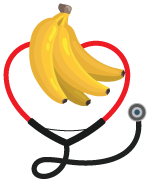Banana Fruit: Types, Nutrition, Health Benefits, Uses
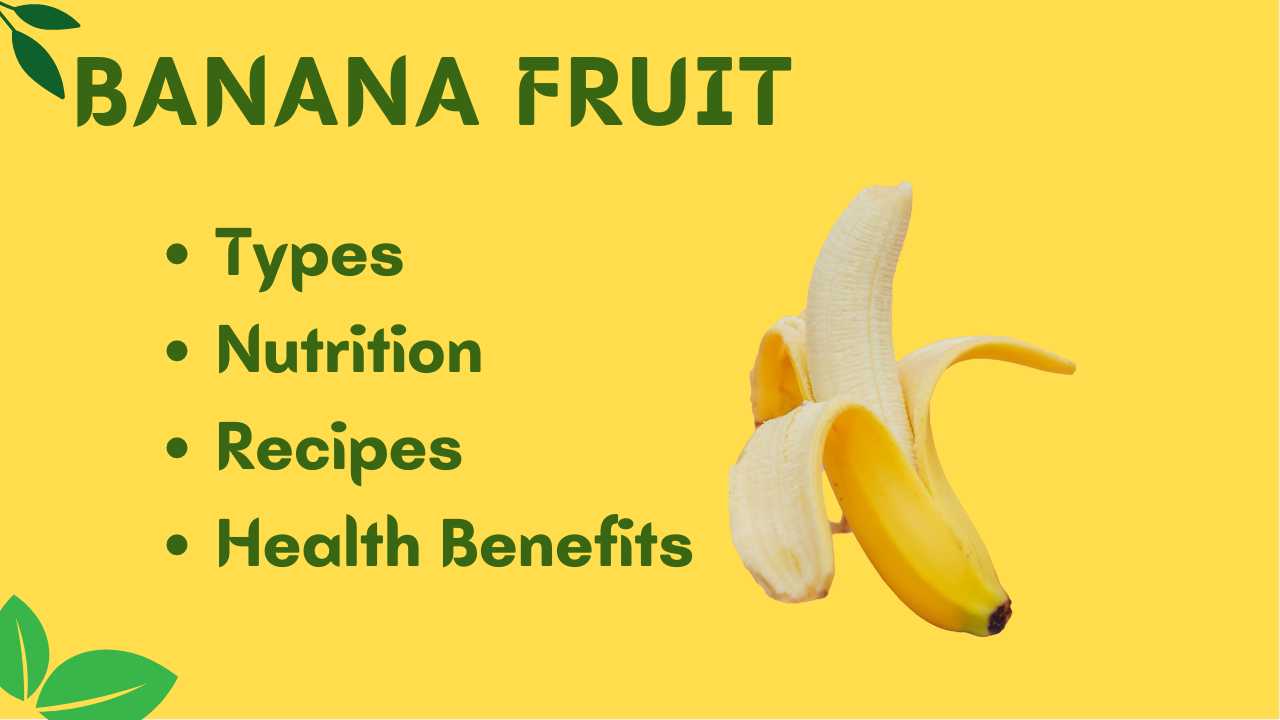
Written By Sania Malik || Reviewed By Adeel Abbas
Introduction to banana fruit
Banana is a yellow and curved shaped sweet fruit. Bananas have nutrients like, Vitamin C, fiber and potassium. It is also a good source of energy. It is also used in baking. Sometimes, it is also green in color.

Bananas are one of the world’s most popular and beloved fruits, known for their delicious taste, versatility, and nutritional benefits. They are a tropical fruit that is grown in many parts of the world and are enjoyed by people of all ages. Bananas are not only a delicious snack, but they are also a rich source of fiber, vitamins, and minerals, making them an important part of a healthy diet. [1]
In this modern era, bananas are also used as a popular ingredient in many recipes ranging from smoothies to bread, and they are also used in many cultures for medicinal purposes. In this article, we will explore the origins, taxonomy, cultivation, nutritional benefits, and culinary uses of bananas, as well as provide tips for incorporating this wonderful fruit into your diet.
Scientific Classification of banana
The taxonomy of bananas is as follows: [2]
Kingdom: Plantae
Clade: Tracheophytes
Clade: Angiosperms
Clade: Monocots
Order: Zingiberales
Family: Musaceae
Genus: Musa
The Musaceae family includes both wild and domesticated bananas, as well as plantains. The genus Musa contains over 70 species of bananas, many of which are not commonly cultivated for human consumption.
The bananas that are most commonly eaten are cultivars of the species Musa acuminata and Musa balbisiana. These two species have been hybridized to create a wide variety of different banana cultivars with different sizes, shapes, and flavors.
Bananas are important crops in many parts of the world, particularly in tropical and subtropical regions. They are grown for their fruit, which is used for food, as well as for fiber, ornamental purposes, and medicinal uses.
History and Origin of Banana
The scientific name for banana is Musa from Family Musaceae.[3] The banana is believed to have originated in Southeast Asia, specifically in the region that now encompasses Indonesia, the Philippines, and Malaysia. It is thought to have been cultivated for thousands of years, with evidence of its consumption dating back to at least 500 BCE.
The ancient Greeks and Romans were familiar with the banana, but it was not introduced to Europe on a larger scale until the 15th century, when Portuguese explorers brought it back from West Africa. From there, it spread throughout the continent, and eventually to the Americas, where it was brought by Spanish conquistadors in the 16th century.
The modern banana that we know today is actually a cultivar of the Musa acuminata, a wild banana that is native to Southeast Asia. This cultivar was developed through selective breeding, and it is the result of thousands of years of human intervention and agricultural development.
Today, the banana is one of the most popular fruits in the world, with over 100 billion bananas consumed annually. It is an important source of nutrition for many people, particularly in developing countries, and it has played a significant role in global trade and commerce.
Physical Characteristics of banana: [4]
Here are some physical characteristics of bananas:
Shape
Bananas are generally elongated, curved fruits with a slight taper towards one end.
Size
Bananas can vary in size, but most are between 6 and 9 inches in length.
Color
When ripe, bananas are typically yellow, but they can also be green, red, or even purple.
Texture
Bananas have a soft, smooth texture when ripe, and their flesh is juicy and sweet.
Skin
Bananas are covered in a thin, pliable skin that can be easily peeled.
Seeds
Most bananas are seedless, but some varieties may contain small, black seeds.
Weight
The weight of a banana can vary depending on its size, but on average, a single banana weighs about 4 ounces.
Ripeness
Bananas are harvested when they are still green and will ripen over time. As they ripen, they will become softer and sweeter.
Aroma
Ripe bananas have a sweet, fruity aroma that is often associated with their flavor.
Nutritional value
Bananas are a good source of dietary fiber, vitamin C, vitamin B6, and potassium, among other nutrients. [5]
Banana farming and cultivation
Banana farming and cultivation involves several steps, including: [6]
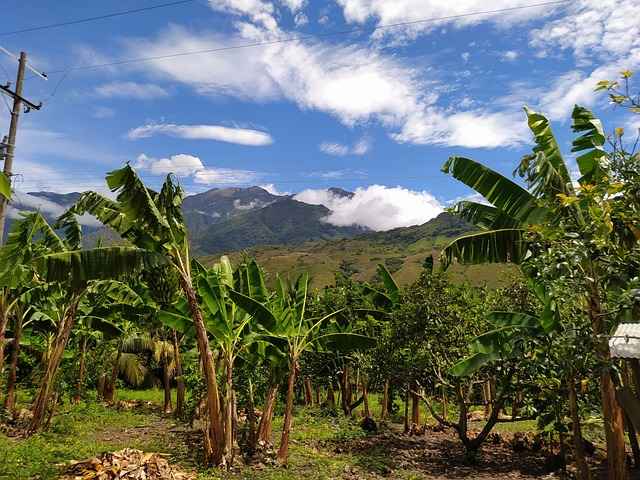
Site selection
Bananas thrive in warm, humid climates with well-draining soil. The site should have access to water and be protected from strong winds.
Land preparation
The land should be cleared of any weeds or debris, and the soil should be tilled and fertilized.
Planting
Banana plants are usually propagated by planting suckers, which are small plants that grow at the base of the parent plant. These can be transplanted to a new location and grown into full-sized banana plants.
Irrigation
Bananas require regular watering, especially during periods of drought. Irrigation systems should be set up to ensure that the plants receive enough water.
Fertilization
Bananas are heavy feeders and require regular fertilization to grow and produce fruit. Fertilizers should be applied at regular intervals throughout the growing season.
Pest and disease control
Bananas are susceptible to a variety of pests and diseases, including nematodes, mites, and fungi. Control measures may include the use of pesticides and fungicides, as well as cultural practices such as crop rotation and sanitation.
Harvesting
Bananas are typically harvested when the fruit is fully mature but still green. The bunches are cut from the plant and transported to a packing house for processing.
Banana farming and cultivation can be a profitable business for farmers in tropical and subtropical regions, but it requires careful planning and management to ensure a successful crop.
Banana varieties
There are many varieties and hybrids of bananas, but some of the most commonly grown and consumed include:[7]
1: Cavendish
Cavendish banana is the most widely grown banana variety in the world and accounts for around 47% of global banana production. It is known for its sweet flavor and firm texture. It is a common type of banana. That is easily available on the farmer’s market and grocery stores. [8]

2: Gros Michel
This variety was the most popular banana in the world until the 1950s, when it was largely replaced by the Cavendish due to its susceptibility to a strain of Panama disease.

3: Red banana
Red bananas are special fruits that are good for your health. They have vitamins like antioxidants, Vitamin C and Vitamin B6. They have fiber and are low in calories, making them a healthy option for meals, snacks, or desserts. [9]
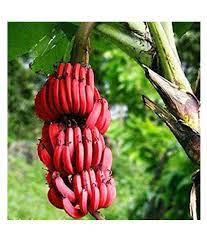
4: Lady Finger
Lady Finger banana is a small and sweet type of banana. It is named for its slender shape and yellow color, similar to the appearance of a lady’s finger. It is considered one of the sweetest types of bananas and is often used in baking, smoothies, and as a snack. Lady Finger bananas are also commonly found in Southeast Asia, the Caribbean, and South America. [10]

5: Plantain
Plantains are a type of banana that is larger than sweet bananas. They are cooked, not eaten raw, and used in dishes like chips and fritters. They grow in tropical regions like Central and South America, Africa, and Southeast Asia. [11]

6: Blue Java
The Blue Java Banana is known for its sweet, creamy taste and blue-green skin. It is a dessert banana used in smoothies and baking. It has a soft texture and mild vanilla-like flavor. This type of banana is mostly found in tropical regions. [12]
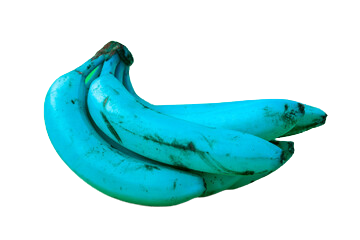
7: Pisang Raja
Pisang Raja, also known as “King Banana” or “Musang King,” is a premium variety of banana that originates from Malaysia. This Indonesian variety is popular for its sweet, aromatic flavor and firm texture.
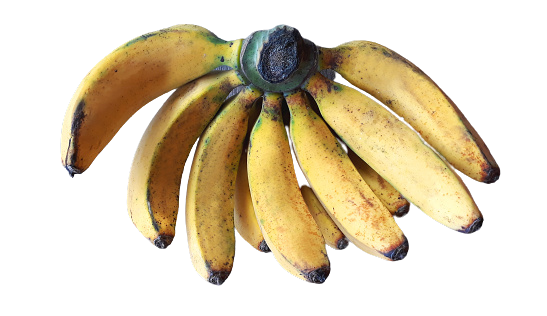
8: Goldfinger Banana
Gold Finger banana, also known as Musa ‘Gold finger’, is a relatively new banana variety that originated in Honduras. It belongs to the Cavendish banana family and is characterized by its slender shape, bright yellow skin, and sweet taste. This hybrid banana variety is resistant to Panama disease and has a sweet, apple-like flavor.
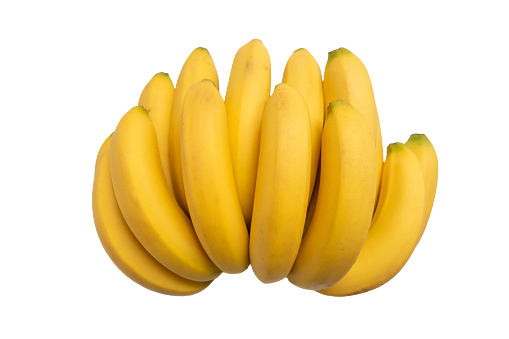
9: Burro Banana
Burro bananas are a type of banana that is native to Central and South America. They are smaller than Cavendish bananas, and they have a stubbier shape and a thicker skin that is green when unripe and turns yellow when ripe. This variety is small and blocky with a thick, yellow-green skin and a mild, tangy flavor. It is often used in baking or fried and served as a snack.

There are many other varieties and hybrids of bananas, each with its own unique flavor and characteristics.
Nutrient- rich Fruit
Bananas are a rich source of various essential nutrients, including fiber, antioxidants, vitamins, and minerals. One medium-sized banana contains about 112 calories, 3 grams of fiber, and the following nutrients (as a percentage of the daily value). [13]
- Vitamin C: 12%
- Riboflavin: 7%
- Folate: 6%
- Niacin: 5%
- Copper: 11%
- Potassium: 10%
- Magnesium: 8%
The nutrition details for 1 medium sized banana are;
- Calories: 89
- Water: 75%
- Protein: 1.1 grams
- Crabs: 22.8 grams
- Sugar: 12.2 grams
- Fiber: 2.6 grams
- Fat: 0.3 grams
Carbs
Bananas are source of quick energy from simple carbohydrates like fructose and glucose. They also contain fiber for digestive regulation and fullness of empty stomach. A medium banana has 14g of carbohydrates, or 5% of daily recommended intake. [14]
Fibers
Banana plant is not only gives you fruit but also gives you sweet and tasty fruits but also gives you fiber, the banana fiber. It is a natural and plant fiber. The banana fibers are used to make products like mats, bags, bins, etc. These fibers are extracted from the trunk of the plant. [15]
Vitamins and minerals
Bananas are an excellent source of vital nutrients, particularly potassium, Vitamin B6, and Vitamin C. [16]
Potassium
They are a good source of potassium and can help lower blood pressure in individuals, and promoting heart health. [17]
Vitamin B6
One medium-sized banana can provide a substantial amount of Vitamin B6, as much as 33% of the recommended Daily Value. [18]
Vitamin C
Bananas, like most fruits, are an excellent source of Vitamin C.
Magnesium [19]
Bananas are a good source of magnesium, which is important for maintaining healthy muscles and nerves.
Antioxidants
Bananas contain several antioxidants, including dopamine and catechins, which can help to protect the body against oxidative stress and reduce the risk of chronic diseases.
Bananas are a nutritious fruit that can provide a wide range of health benefits. They are a good source of several important nutrients and can be easily incorporated into a healthy and balanced diet.
Health Benefits of Bananas
Bananas are one of the most widely available, convenient, and nutritious fruits in the world. They are not only delicious but also come with several health benefits that make them an excellent addition to any diet.
This article will explore the science-backed health benefits of bananas, including their nutrient content, impact on blood sugar levels, digestive health, weight loss, and heart health. [20]
1: Impact on Blood Sugar Levels
Bananas regulate blood sugar with soluble fiber. Unripe bananas contain resistant starch. They regulate digestion rate and regulate appetite. But the individuals with diabetes should limit their intake. [21]
2: Improving Digestive Health
Bananas help with Digestive issue. Banana is a soft fruit enough to be eaten. If anyone is suffering from stomach issues and diarrhea, it helps to restore lost electrolytes back. Dietary fibers have ability to improve digestive health. The fiber in the bananas that are unripe, have starch that resists digestion. [22]
3: Helps with weight loss
Including one banana daily as part of a balanced diet can aid in weight loss efforts. Bananas may not have been proven to directly cause weight loss, but they are a healthy, with low calorie and filling food.
4: Beneficial for heart health
Eating bananas on daily basis may help to prevent heart attacks and strokes. Bananas are a good source of potassium, a mineral that is essential for heart health. Potassium helps regulate blood pressure, reduces the risk of stroke. It also protect against heart disease. [23]
5: Blood pressure
Bananas can have a positive impact on blood pressure. They are rich in potassium, which is a mineral that helps regulate blood pressure by counteracting the negative effects of sodium. Eating bananas as part of a healthy diet can help maintain healthy blood pressure levels.[24]
6: Preserving memory
According to studies, eating bananas has been shown to enhance learning and improve exam scores. Bananas are rich in vitamins B6 and B12, which are important for maintaining healthy brain function and preventing memory loss Bananas have a positive impact on memory preservation. [25]
7: Boosting mood
Eating bananas regularly as part of a healthy diet can help support brain health and boost mood. Bananas have a positive impact on mood enhancement. [26] Bananas also have tryptophan that helps to regulate mood and reduce symptoms of depression.
8: Diabetes
Bananas can be a helpful food for individuals with diabetes. Bananas are a good source of fiber, which can also help regulate blood sugar levels. [27]
9: A Source of Antioxidants
Bananas are a rich source of antioxidants, which are important for maintaining good health. Antioxidants help to protect your body from damage caused by harmful molecules called free radicals. [28]
10: Good for the Skin
Bananas are very good for skin. Bananas contain vitamins A, C, and E, which are essential for maintaining healthy skin. Vitamin A can help reduce wrinkles, vitamin C can boost collagen production, and vitamin E can protect the skin from sun damage. [29]
11: Easy to add to your diet
Bananas are both nutritious and practical as a snack food. They can be easily added to various dishes such as yogurt, cereal, and smoothies.
They also make a tasty topping for whole grain toast with peanut butter. Similarly, they can be used to replace sugar in cooking and baking. [30]
12: Improving Kidney Health
Eating a banana daily can greatly reduce kidney stones symptoms. Potassium found in bananas helps to regulate calcium and oxalate levels, therefore it lowering the chances of kidney stone formation.
13: Feeling Full: The Power of Bananas
Bananas may help you feel fuller because they contain soluble fiber which adds bulk to your digestive system and slows digestion.
14: Good for Strong Bones
Bananas contain several nutrients that are important for maintaining healthy bones, like: [31]
Vitamin C
It helps produce collagen, a protein that gives bones strength and structure.
Vitamin D
It regulates calcium levels and is important for bone growth and maintenance.
Potassium
It helps maintain proper bone mineral density and can also help prevent osteoporosis.
Magnesium
It also helps regulate calcium levels and is involved in bone mineralization.
15: Benefits of banana for gym
Bananas are good choice of gym goers. They give them a source of energy, lost electrolytes and muscle recovery.
16: Banana for toddlers
Bananas are good for toddlers as they contain essential vitamins, minerals, and fiber, are easy to digest, naturally sweet, and versatile. [32]
17: A Nutritious Fruit for Women
Bananas are a nutritious fruit for women, containing essential vitamins and minerals such as potassium, fiber, vitamin B6, vitamin C, and Folate. It also have many health benefits for women.
These nutrients support heart health, regulate digestion, promote mood, support the immune system, promote healthy skin and hair, and are especially important during pregnancy.
18: Help You Achieve Beauty Sleep
Bananas are low in magnesium, while the peels are high in tryptophan. These characteristics can help to regulate the body’s natural sleep patterns.
19: Improves Eyesight
Bananas support eye health with vitamins A & C and lithium. Regular consumption helps maintain good eye health. A delicious and nutritious choice for eye health.
20: Banana for hair
Bananas contain natural oils, vitamins, and minerals that benefit hair health. [33] They moisturize hair, reduce breakage, add shine, smoothness and reduce frizz, and provide essential nourishment for hair growth.
21: Banana for face
Bananas contain vitamin C which helps to brighten and even out skin tone. They hydrate and moisturize the skin, reduce fine lines and wrinkles. [34]
22: Banana for Breakfast
Banana as a part of breakfast will help you in digestive health.
23: Banana shake in Breakfast
The best time to drink banana shake in morning, in breakfast. It helps you to gain weight.
24: Banana peel
Banana peel helps you to improve your skin. And it also helps to reduce the wrinkles and fine lines. [35]
25: Banana chips
Banana chips give you energy. It also provides your nutrients to the body. [36]
26: Banana before workout
Banana is a gym snack. Before workout it gives you enough energy to maximize your workout performance.
Culinary uses of Banana
Bananas have many culinary uses and can be eaten fresh or cooked in a variety of dishes. Some common culinary uses of bananas include:
Fresh eating
Bananas are often eaten fresh as a healthy snack or added to smoothies and fruit salads.
Baking
Bananas are a popular ingredient in baking and can be used to make banana bread, muffins, and cakes.
Desserts
Bananas are commonly used in desserts such as banana pudding, banana cream pie, and banana splits.
Fried or baked
Bananas can be sliced and fried or baked to make a sweet and crunchy snack.
Smoothies and shakes
Bananas can be blended with other fruits and ingredients to make smoothies and shakes.
Chips
Bananas can be sliced and dehydrated to make banana chips, a popular snack.
Curries and stews
Bananas can be used in savory dishes such as curries and stews, particularly in cuisines of South Asia and the Caribbean.
Plantains
In some cuisines, such as Latin American and West African, plantains are used in cooking in savory dishes like tostones, mofongo, and arroz con platano.
Overall, bananas are a versatile ingredient that can be used in a wide variety of sweet and savory dishes.
When to eat banana and How much to eat?
When to eat bananas and how much to eat can depend on individual preferences and dietary needs. Here are some general guidelines:
1: Time of day
Bananas can be eaten at any time of day, but they are often eaten as a breakfast food or as a mid-morning or afternoon snack.
2: Ripeness
Bananas can be eaten at any stage of ripeness, but the level of sweetness and texture can vary depending on the ripeness. Some people prefer to eat bananas when they are still slightly green, while others prefer them when they are fully ripe and have a softer texture.
3: Quantity
The amount of bananas to eat can vary depending on individual needs and dietary goals. As a general guideline, one medium-sized banana contains around 100-120 calories and can provide a good source of carbohydrates and fiber. Eating 1-2 bananas per day as part of a balanced diet is generally considered safe and healthy for most people.
4: Dietary considerations
People with certain dietary restrictions or medical conditions may need to limit their intake of bananas. For example, people with diabetes may need to monitor their carbohydrate intake and limit the amount of bananas they eat, while people with potassium restrictions may need to limit their intake of bananas as they are a good source of potassium.
Bananas can be a healthy and nutritious addition to a balanced diet, but the amount and timing of consumption may depend on individual needs and preferences.
Green Banana
A green banana is an unripe banana that is firm and starchy in taste, with a lower level of sugar compared to a ripe banana. Green bananas are often used in cooking, especially in dishes in which a starchy vegetable is required, and are also a popular food source for people following low-carbohydrate diets.

They are a good source of fiber, vitamins, and minerals, and are considered a staple food in many cultures around the world.[37] The level of resistant starch in bananas decreases as they ripen and become sweeter.
How to Incorporate Banana into Your Diet?
Bananas make a convenient and portable snack. Simply peel and eat a banana on its own or pair it with other healthy snacks such as nuts, seeds, or yogurt.
1: In smoothies
Bananas make a great base for smoothies and can be combined with other fruits, vegetables, and protein sources to create a nutritious and filling meal.
2: In oatmeal
Sliced bananas can be added to a bowl of oatmeal for a sweet and filling breakfast.
3: In baked goods
Bananas can be used as a substitute for sugar and fat in baked goods such as banana bread, muffins, and cakes.
4: In salads
Sliced bananas can be added to fruit salads or green salads for a sweet and nutritious addition.
5: In sandwiches
Sliced bananas can be added to peanut butter or almond butter sandwiches for a sweet and satisfying meal.
6: In curries and stews
In some cuisines, such as South Asian and Caribbean, bananas are used in savory dishes such as curries and stews.
Bananas are a versatile and nutritious fruit that can be incorporated into a variety of dishes and snacks. Adding bananas to your diet can provide a range of health benefits, including increased fiber intake, improved digestion, and better heart health. [38]
Banana Have a Low glycemic Index (GI)
The glycemic index (GI) of bananas depends on their ripeness. Unripe or green bananas have a lower GI compared to ripe bananas. The ripeness of a banana affects the breakdown of carbohydrates into sugar (glucose) in the body and thus, affects the glycemic index.[39]
Ripe bananas are generally easier to digest and have higher sugar content, making them a faster source of energy. Unripe bananas, on the other hand, are higher in fiber and have a slower release of sugar, which makes them a better option for people with blood sugar issues.
Best Banana Recipes & Desserts
Here are some delicious banana recipes & desserts. [40]
- Banana Oatmeal Cookies
- Banana Smoothie
- Banana Pancakes
- Banana Bread
- Chocolate Banana Smoothie Bowl
- Banana and Peanut Butter Overnight Oats
- Banana Cobbler Recipe
- Banana Trifle
- Banana Pudding
- Banana Muffins
- Banana Bread French toast
- Banana Cream Cheese Muffins
- Banana Nutella Crepes
- Banana Chocolate Chip Bread
- Banana Cinnamon Rolls
- Banana Energy Bites
- Banana Crumb Cake
- Banana Hummus
- Banana Cream Cheese Spread
- Banana Cheesecake
- Banana Cake
- Banana Cookies
- Banana Chips
- Banana Jam
- Banana Scones
- Banana Brownies
- Banana Granola
- Banana Bars
- Banana Trifle
- Banana Cobbler Recipe
Banana Desserts
- Banana Cream Pie
- Banana Cream Chocolate Truffles
- Bananas ‘n’ Cream Tube Pan Cake
- Banana Otmeal Cookies
- Banana Orange Bars
- Quick Bananas Foster
- Banana-Nut Bundt Cake
- Banana Oat Muffins
Conclusion
Bananas are an excellent addition to any diet, providing a wealth of essential nutrients and health benefits. Whether you’re looking to regulate blood sugar levels, improve digestive health, support weight loss, or promote heart health, bananas are an excellent choice.
Bananas are a nutritious and delicious fruit that can provide a range of health benefits when incorporated into a balanced diet. They are a good source of fiber, vitamins, and minerals, and can help improve digestion, reduce inflammation, and support heart health.
There are many ways to incorporate bananas into your diet, such as eating them as a snack, adding them to smoothies, or baking them into sweet treats. With their versatility and health benefits, bananas are a great addition to any diet.
FAQs
Can bananas be eaten by people with diabetes?
Yes, bananas can be eaten by people with diabetes, but it’s important to limit their intake and not consume a large portion in one sitting.
Are bananas good for weight loss?
Yes, Bananas can be a good food for weight loss as they are low in calories, high in fiber, and can help you feel full and satisfied. However, it’s important to eat bananas in moderation as they are also high in sugar and carbohydrates
How many bananas should I eat per day?
The recommended serving size for bananas is one medium-sized banana per day. This can vary depending on individual dietary needs and preferences.
Can bananas help with digestion?
Yes, bananas are a good source of fiber which can help promote healthy digestion and reduce constipation.
Are bananas good sources of potassium?
Yes, bananas are a good source of potassium which is an important mineral for heart health, blood pressure regulation, and muscle function.
Can I eat bananas if I have diabetes?
People with diabetes can eat bananas in moderation as part of a balanced diet. However, it’s important to monitor carbohydrate intake and blood sugar levels.
